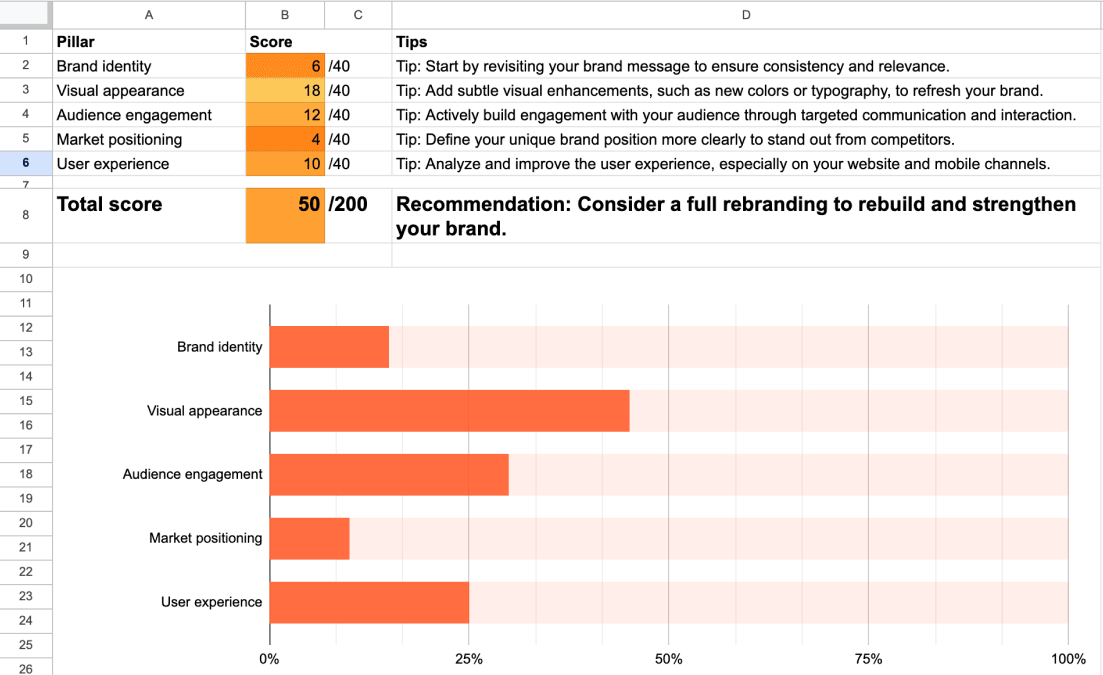Rebranding vs. brand refresh: what’s best for your business?

Rebranding is a big move. It sounds bold, exciting—like hitting reset on your brand. But let’s hit pause for a second. Rebranding can also drain resources and take focus away from the strengths that made your brand successful in the first place. Sometimes, the real answer isn’t a full rebrand; it’s in tuning up what’s already there.
This post will help you find clarity on whether you need a full rebranding or just a brand refresh, so you can move forward with purpose—and maybe save a few bucks along the way.
Identify the need for change
Your brand is saying something, whether you realize it or not. The question is: what’s it saying, and is your audience actually listening? If your brand message feels off, or you’re attracting a different audience than before, it’s probably time to assess where things stand. But don’t jump straight into a rebrand just yet; sometimes, a strategic tune-up is all it takes to bring your brand back into focus.
If you’re wondering when it’s time to rebrand, our in-depth guide on identifying the right moment to rebrand covers essential signs and strategic advice to help you decide.
A quick gut-check
Start by reflecting on a few core areas. Are there aspects of your brand that feel inconsistent? Are competitors looking fresher and more relevant than you? Is your product or service offering shifting to reach new customers? When your brand isn’t connecting, these small cues often hint that a brand refresh could be a faster fix.

Need a little help to decide?
I’ve created a free tool that guides you through this process to help you assess whether it’s time for a rebranding or just a brand refresh. Think of it as a quick brand health check to get you on the right track.
When to choose a brand refresh
If the foundation of your brand is still solid, but some aspects feel outdated, a brand refresh is often the best approach. A brand refresh doesn’t reinvent; it enhances. Think of it as an upgrade that makes your brand sharper and more resonant without changing the heart of what makes it unique.
For example, let’s say your website’s user experience feels clunky. Refreshing the layout or updating functionality can make a world of difference in how customers experience your brand without changing your brand’s identity. Or, maybe your messaging is starting to feel stale—giving it a new tone to better resonate with your audience can keep you relevant.
Remember, small changes can bring big impact. And a brand refresh often costs less, making it a practical route to keep your brand top-of-mind.
When to choose a rebrand
Rebranding is a big step, and it’s not for everyone. But sometimes, your business has evolved beyond what the original brand represents. If you’re offering new services, targeting a different demographic, or aiming to differentiate yourself from a sea of lookalike competitors, a full rebrand might be the answer.
Think about brands that have taken this path successfully: Old Spice transformed itself from a “grandpa” brand to one that’s edgy and relevant for a younger audience. This wasn’t just about new colors; it was a complete reset that aligned with a new customer base and a bold tone. If your brand’s message or look feels fundamentally out of sync with your business goals, a rebrand can be a powerful way to realign. But honestly, I kinda like the look of the old product line.

But a rebrand goes beyond visuals. It’s about reshaping the entire experience, setting a fresh tone, and making a strong statement about where your business is heading.
Finding a middle ground
There’s a sweet spot between rebranding and a brand refresh: the “soft rebrand.” A soft rebrand lets you keep your brand’s core identity while refreshing it in just the right places to create renewed interest.
For instance, updating visual elements—like modernizing your color palette or tweaking the logo—can make your brand feel current without changing the essence of who you are. Or, you might simplify your messaging to make it more direct and relatable for today’s audience. Apple’s “Think Different” campaign is a classic example of this kind of transformation, where a powerful new tagline added depth without changing the brand’s core identity. (Here’s an interesting read on the real story behind the campaign.)

A soft rebrand allows for new energy and relevance without the full cost and commitment of a major rebrand. It keeps your message intact, but with fresh flair.
Weighing the cost and impact
Every choice has a price tag—both in terms of resources and impact. A brand refresh tends to be less costly and disruptive, allowing you to make meaningful adjustments without the overhaul. Rebranding, however, is a deeper investment of time, resources, and energy but can yield significant rewards if your brand has truly outgrown its current image.
In the end, the right choice comes down to understanding what your brand really needs to achieve its goals. Whether that’s a few thoughtful updates or a full rebrand, knowing your brand’s strengths and weaknesses will guide you to the most impactful decision.
Deciding between a rebrand or a brand refresh isn’t just about a new look—it’s about making a statement of where your business is headed. A rebrand can open new doors and align you with a fresh audience, while a strategic brand refresh often gives you the chance to amplify what’s working.